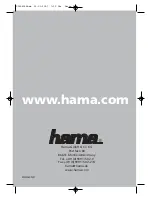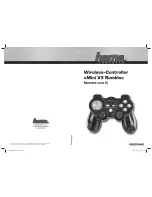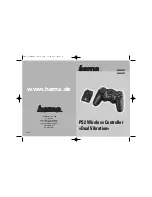
GE Multilin
D60 Line Distance Protection System
B-1
APPENDIX B
B.1 MODBUS RTU PROTOCOL
B
APPENDIX B MODBUS COMMUNICATIONSB.1MODBUS RTU PROTOCOL
B.1.1 INTRODUCTION
The UR series supports several communications protocols to allow connection to equipment such as personal computers,
remote terminal units (RTUs), supervisory control and data acquisition (SCADA) masters, and programmable logic control-
lers. The Modicon Modbus protocol is the most basic protocol supported by the UR. Modbus RTU is available via the
RS232 and RS485 serial links, and Modbus TCP/IP is available over Ethernet. The following description is intended primar-
ily for users who want to develop their own master communication drivers. Note that:
•
The UR always acts as a slave device, meaning that it never initiates communications. It listens and responds to
requests issued by a master computer.
•
A subset of Modbus RTU and Modbus TCP/IP protocol format is supported that allows extensive monitoring, program-
ming, and control functions using read and write register commands.
B.1.2 PHYSICAL LAYER
Each data byte is transmitted in an asynchronous format consisting of 1 start bit, 8 data bits, 1 stop bit, and possibly 1 parity
bit. This produces a 10 or 11 bit data frame. This can be important for transmission through modems at high bit rates (11 bit
data frames are not supported by many modems at baud rates greater than 300).
The faceplate RS232 port is intended for local use and is fixed at 19200 bit/s baud and even parity. The rear terminal
RS485 port can be set for baud rates of 300, 1200, 2400, 4800, 9600, 14400, 19200, 28800, 33600, 38400, 57600, or
115200 bps, and even, odd, and no parity options are available. See the
Communications
section of chapter 5 for details.
The Modbus TCP/IP protocol is available on each of the rear Ethernet ports. Depending on the relay's order code, these
ports can be 10/100Base-TX or 100Base-FX.
B.1.3 DATA LINK LAYER
Modbus RTU communications takes place in packets that are groups of asynchronously framed byte data. The master
transmits a packet to the slave and the slave responds with a packet. The following information describes the general for-
mat for both transmit and receive packets. For details on packet formatting, see subsequent sections describing each func-
tion code.
•
SLAVE ADDRESS:
This is the address of the slave device that is intended to receive the packet sent by the master
and to perform the desired action. Each slave device on a communications bus must have a unique address to prevent
bus contention. All of the relay’s ports have the same address which is programmable from 1 to 254; see chapter 5 for
details. Only the addressed slave will respond to a packet that starts with its address. Note that the faceplate port is an
exception to this rule; it will act on a message containing any slave address.
A master transmit packet with slave address 0 indicates a broadcast command. All slaves on the communication link
take action based on the packet, but none respond to the master.
•
FUNCTION CODE:
This is one of the supported functions codes of the unit which tells the slave what action to per-
form. See the
Supported Function Codes
section for details. An exception response from the slave is indicated by set-
ting the high order bit of the function code in the response packet. See the
Exception Responses
section for details.
•
DATA:
This will be a variable number of bytes depending on the function code. This may include actual values, set-
tings, or addresses sent by the master to the slave or by the slave to the master.
•
CRC:
This is a two byte error checking code. The RTU version of Modbus includes a 16-bit cyclic redundancy check
(CRC-16) with every packet which is an industry standard method used for error detection. If a Modbus slave device
Table B–1: MODBUS RTU PACKET FORMAT
DESCRIPTION
SIZE
SLAVE ADDRESS
1 byte
FUNCTION CODE
1 byte
DATA
N bytes
CRC
2 bytes
DEAD TIME
3.5 bytes transmission time
Содержание D60
Страница 61: ...GE Multilin D60 Line Distance Protection System 2 31 2 PRODUCT DESCRIPTION 2 3 SPECIFICATIONS 2 ...
Страница 62: ...2 32 D60 Line Distance Protection System GE Multilin 2 3 SPECIFICATIONS 2 PRODUCT DESCRIPTION 2 ...
Страница 102: ...3 40 D60 Line Distance Protection System GE Multilin 3 3 DIRECT INPUT AND OUTPUT COMMUNICATIONS 3 HARDWARE 3 ...
Страница 134: ...4 32 D60 Line Distance Protection System GE Multilin 4 3 FACEPLATE INTERFACE 4 HUMAN INTERFACES 4 ...
Страница 508: ...5 374 D60 Line Distance Protection System GE Multilin 5 10 TESTING 5 SETTINGS 5 ...
Страница 538: ...6 30 D60 Line Distance Protection System GE Multilin 6 5 PRODUCT INFORMATION 6 ACTUAL VALUES 6 ...
Страница 610: ...10 8 D60 Line Distance Protection System GE Multilin 10 2 BATTERIES 10 MAINTENANCE 10 ...
Страница 622: ...A 12 D60 Line Distance Protection System GE Multilin A 1 PARAMETER LISTS APPENDIX A A ...
Страница 745: ...GE Multilin D60 Line Distance Protection System B 123 APPENDIX B B 4 MEMORY MAPPING B ...
Страница 746: ...B 124 D60 Line Distance Protection System GE Multilin B 4 MEMORY MAPPING APPENDIX B B ...
Страница 776: ...C 30 D60 Line Distance Protection System GE Multilin C 7 LOGICAL NODES APPENDIX C C ...
Страница 792: ...E 10 D60 Line Distance Protection System GE Multilin E 1 IEC 60870 5 104 PROTOCOL APPENDIX E E ...
Страница 804: ...F 12 D60 Line Distance Protection System GE Multilin F 2 DNP POINT LISTS APPENDIX F F ...
Страница 826: ...xii D60 Line Distance Protection System GE Multilin INDEX ...
















































